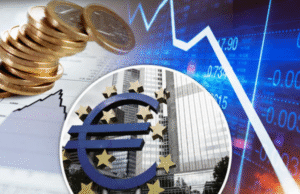#FederalReserve #EuropeanCentralBank #InterestRates #EconomicPolicy #GlobalEconomy #MonetaryPolicy #CentralBanks #FinancialMarkets
In a significant development that could have far-reaching implications for the global economy and financial markets, the Bank for International Settlements (BIS) – often referred to as the central bank of central banks – has indicated that the Federal Reserve (Fed) and the European Central Bank (ECB) are positioned to make “major progress” in reducing interest rates this year. This forecast is set against a backdrop of fluctuating economic conditions and comes as welcome news to various sectors that have been eagerly anticipating a shift in monetary policy direction after a prolonged period of heightened rates aimed at controlling inflation.
The anticipated move by the Fed and ECB to cut interest rates marks a pivotal turn in the approach toward stimulating economic growth and easing the borrowing costs that have weighed on both individuals and businesses alike. Lower interest rates typically encourage more borrowing and spending, leading to increased investment and consumption which, in turn, can spur economic activity. This change is especially significant as it signals a shift from the previous strategy of rate hikes employed by both central banks in an effort to temper inflation, which has been running at multi-decade highs in many parts of the world. The transition to a more accommodative monetary policy is likely to have a broad impact, potentially boosting stock markets, easing the burden on loans and mortgages, and providing a more favorable environment for economic expansion.
However, this shift does come with its challenges and considerations. While lower interest rates can stimulate economic growth, they can also lead to higher inflation if not carefully managed. The delicate balance between fostering growth and controlling inflation will be a significant focus for the Fed and ECB as they navigate through these policy changes. Additionally, the global economic landscape remains uncertain, with factors such as geopolitical tensions, supply chain disruptions, and the ongoing effects of the pandemic still in play. These variables underscore the complexity of the decision-making process for central banks and highlight the importance of monitoring the economic indicators and adjusting policies as necessary to support sustainable growth. As the year progresses, the actions of the Fed and ECB in managing interest rates will be crucial in shaping the economic recovery and ensuring financial stability in a post-pandemic world.







Comments are closed.